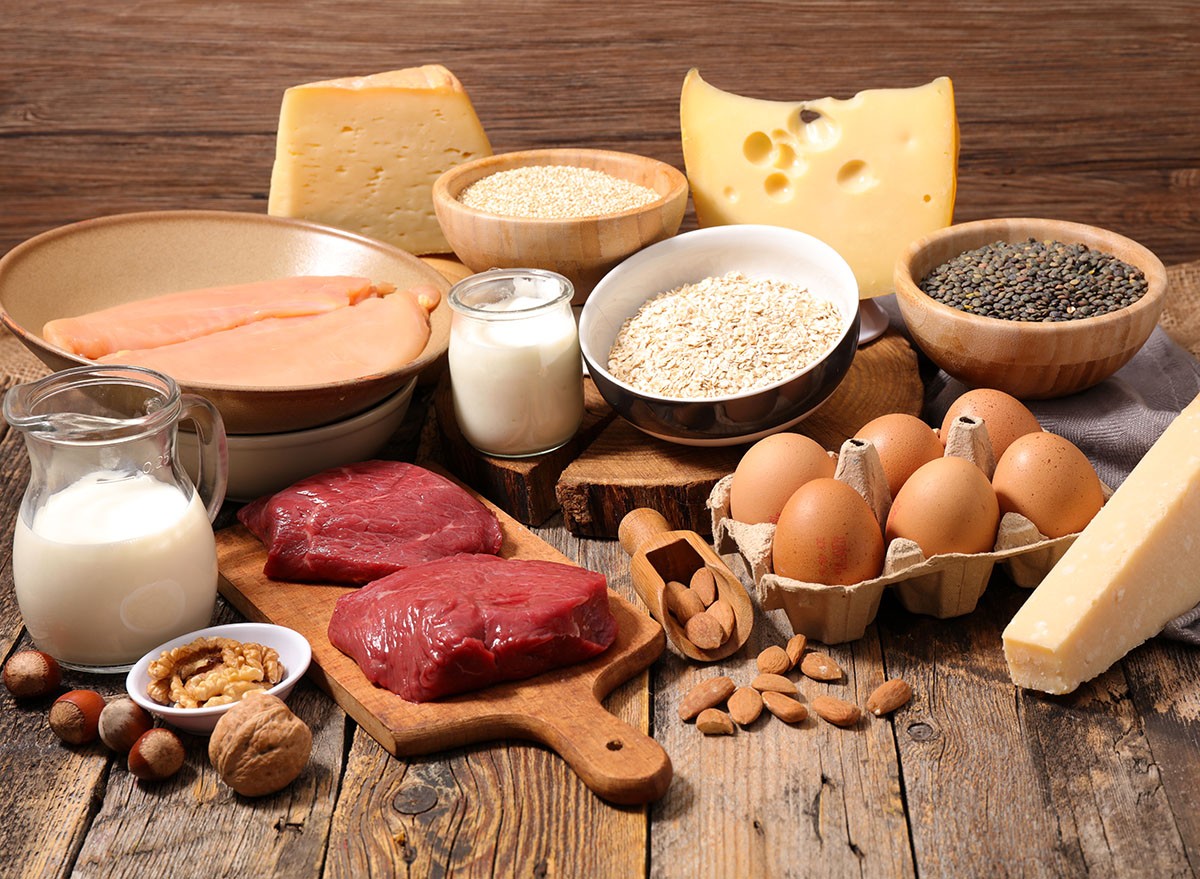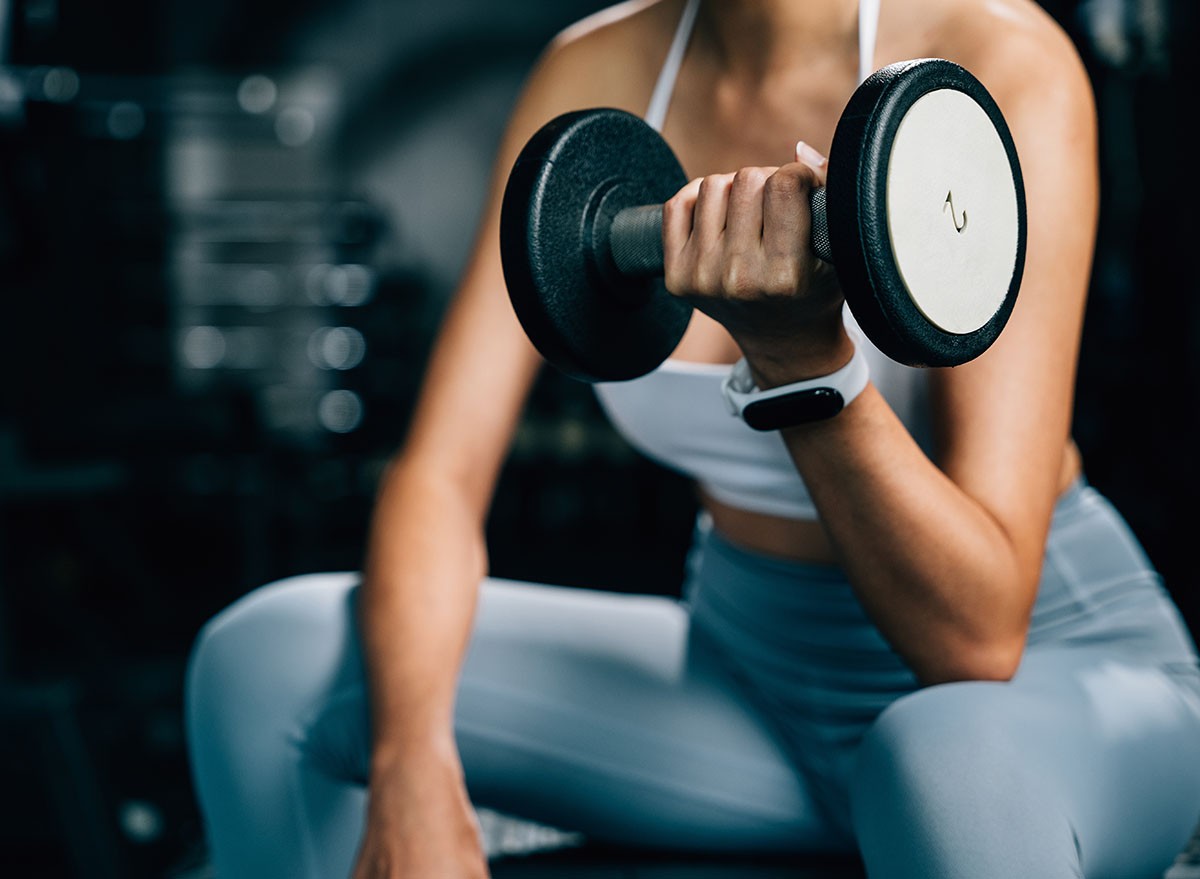7 Fat-Burning Habits That Work During Perimenopause

Perimenopause can be a frustrating time for anyone trying to lose weight, especially if you are still relying on the habits that worked for you in your thirties. However, it is still possible to burn fat and slim down, if you make some simple changes to your routine. Ashley DiGiacomo Schwartz is a fitness and nutrition coach who transformed her body during perimenopause and helps other women do the same. "Perimenopause can be hard, but you can be making it exponentially harder if you have bad habits that exacerbate the symptoms and speed up the process," she writes in a recent post. "10 habits you need to boost your metabolism in perimenopause."
Amp Up Your Protein Intake

The first habit is starting your day with 30 to 50 grams of protein. "Protein helps stabilize blood sugar, support muscle growth, and reduces cravings which is a must in perimenopause," she says.
Eat Breakfast

Ashley doesn't recommend skipping breakfast or intermittent fasting. "Eat Breakfast or consume something with protein within 30 min of waking up," she says. "No more coffee on an empty stomach or fasting. We need to bring our cortisol down in the morning to increase our fat burning potential. Cortisol is highest first thing in the morning."
Lift Weights

Next, she suggests prioritizing strength training. "30 min 3-4 times a week is ideal and helps maintain muscle, metabolism, and bone density," she says.
Eat Fruits and Veggies with Every Meal

Also, make sure to pack in the product. "Eat a veggie or fruit at every meal. Aim for 25-30g of fiber daily to support gut health, estrogen detox, and blood sugar balance," she says.
Hydrate First Thing

Wake up and drink water. "Hydrate first thing in the morning before coffee," she suggests. "You can add a pinch of sea salt to 8 oz of water first thing in the morning for better hydration and energy."
Take Magnesium Glycinate Before Bed

She's also an advocate of taking magnesium glycinate before bed. "Magnesium supports deep sleep, muscle relaxation, blood sugar control and stress resilience—essential in perimenopause," she says.
Get Some Sun

Her last tip? Get outside for some Vitamin D. "Try to get 10 Minutes of morning sun outside (or sunlamp) Natural light regulates cortisol and melatonin, improving mood, energy, and sleep," she says. And if you enjoyed this article, take advantage of these 15 Quick Ways to Lose Body Fat Percentage in a Week.




